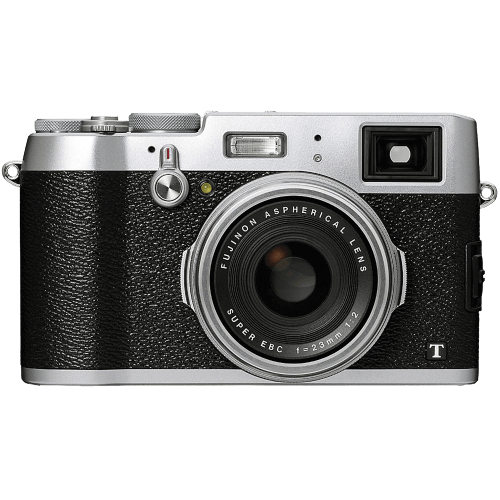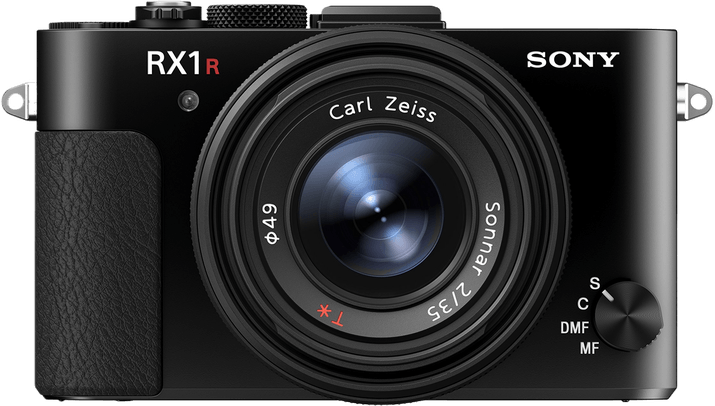Fujifilm X100T vs Sony Cyber-shot DSC-RX1R II Comparison
Fujifilm X100T

Sony Cyber-shot DSC-RX1R II

The Sony Cyber-shot DSC-RX1R II outperforms the Fujifilm X100T with a score of 62/100 compared to 53/100. Both cameras were released in 2015 and share some common specifications. They have similar announcement dates and sizes, with the Fujifilm X100T measuring 127 x 74 x 52mm and the Sony Cyber-shot DSC-RX1R II at 113 x 65 x 72mm.
The Sony Cyber-shot DSC-RX1R II excels with its compact design and higher score. However, it comes with a higher launch price of $3300 compared to the Fujifilm X100T’s $1300. On the other hand, the Fujifilm X100T is lighter, weighing 440g while the Sony Cyber-shot DSC-RX1R II weighs 507g.
Taking these factors into account, the Sony Cyber-shot DSC-RX1R II is a better camera with a higher score, but the Fujifilm X100T offers a more budget-friendly option with a lighter weight.
Fujifilm X100T vs Sony Cyber-shot DSC-RX1R II Overview and Optics
The Sony Cyber-shot DSC-RX1R II emerges as the winner in the optics comparison with a score of 75/100, while the Fujifilm X100T scores 54/100. Both cameras share certain specifications, such as having a CMOS sensor, no image stabilization, and a fixed lens mount, which means the lens cannot be changed.
The Sony Cyber-shot DSC-RX1R II outperforms the Fujifilm X100T in several aspects. With 42.4 megapixels, it has a significantly higher resolution than the X100T’s 16 megapixels, allowing for more detailed images. Additionally, the RX1R II features a full-frame sensor, which contributes to better image quality and low-light performance compared to the X100T’s APS-C sensor. Furthermore, the RX1R II has a DXOMARK sensor score of 97, reflecting its superior image quality.
On the other hand, the Fujifilm X100T holds an advantage in shooting speed, capturing images at 6 frames per second (fps) compared to the RX1R II’s 5 fps. This makes the X100T slightly better for capturing fast-moving subjects. However, it is essential to consider that this advantage is relatively minor compared to the significant benefits offered by the RX1R II in terms of image quality and resolution.
In the optics comparison, the Sony Cyber-shot DSC-RX1R II clearly surpasses the Fujifilm X100T with its higher resolution, full-frame sensor, and overall better image quality. While the X100T has a faster shooting speed, this advantage does not outweigh the benefits provided by the RX1R II. Therefore, the Sony Cyber-shot DSC-RX1R II is the superior choice when considering optics performance.
Fujifilm X100T vs Sony Cyber-shot DSC-RX1R II Video Performance
The Fujifilm X100T outperforms the Sony Cyber-shot DSC-RX1R II in video capabilities, with a score of 70 out of 100 compared to the Sony’s 56. Both cameras share some common specifications, including Full HD video resolution, maximum video dimensions of 1920 x 1080, and a maximum video frame rate of 60fps.
The Fujifilm X100T’s higher score is due to its built-in time-lapse functionality, which the Sony Cyber-shot DSC-RX1R II lacks. This feature allows users to create stunning time-lapse videos without the need for additional equipment or software, making the X100T a more versatile and user-friendly option for videographers.
On the other hand, the Sony Cyber-shot DSC-RX1R II does not have any specific advantages over the Fujifilm X100T in terms of video capabilities, as both cameras have the same video resolution, dimensions, and frame rate. However, the lower score does not necessarily mean it is a poor choice for video; it simply lacks the extra time-lapse feature found in the X100T.
Taking these factors into account, it is clear that the Fujifilm X100T offers superior video capabilities compared to the Sony Cyber-shot DSC-RX1R II, primarily due to its built-in time-lapse functionality. While both cameras provide Full HD video, the X100T’s additional feature makes it a more versatile and convenient choice for those looking to capture high-quality video content.
Fujifilm X100T vs Sony Cyber-shot DSC-RX1R II Features and Benefits
The Fujifilm X100T wins the features comparison with a score of 58/100, while the Sony Cyber-shot DSC-RX1R II scores 44/100. Both cameras share some common specifications, such as a 3-inch screen size, flip screen, no touchscreen feature, no GPS, and WIFI connectivity.
The Fujifilm X100T outperforms the Sony Cyber-shot DSC-RX1R II in terms of screen resolution and Bluetooth connectivity. The X100T has a screen resolution of 2,360,000 dots, which is significantly higher than the RX1R II’s 1,228,800 dots. This difference results in a sharper and clearer image display on the X100T’s screen. Additionally, the X100T has Bluetooth connectivity, allowing for seamless file transfers and remote control, while the RX1R II lacks this feature.
The Sony Cyber-shot DSC-RX1R II, however, does not have any notable advantages over the Fujifilm X100T in terms of features. Both cameras share many specifications, and the RX1R II does not excel in any of the compared aspects.
Considering the specifications, the Fujifilm X100T is a better choice for those who prioritize a higher screen resolution and Bluetooth connectivity. These features make the X100T more user-friendly and provide a better overall experience. On the other hand, the Sony Cyber-shot DSC-RX1R II does not offer any significant advantages in features, making it less appealing when compared to the X100T.
Fujifilm X100T vs Sony Cyber-shot DSC-RX1R II Storage and Battery
The Fujifilm X100T outperforms the Sony Cyber-shot DSC-RX1R II in storage and battery with a score of 21/100, compared to Sony’s 13/100. Both cameras have one memory card slot and accept SD, SDHC, and SDXC cards. However, the Sony camera also supports Memory Stick Pro Duo cards.
The Fujifilm X100T’s advantage lies in its longer battery life, providing 330 shots per charge compared to the Sony’s 220 shots. Both cameras use lithium-ion batteries, with the Fujifilm using the NP-95 and the Sony using the NP-BX1. Neither camera offers USB charging.
Despite the lower score, the Sony Cyber-shot DSC-RX1R II does have an advantage in supporting an additional memory card type. However, the Fujifilm X100T’s substantially longer battery life makes it a more practical choice for extended shooting sessions.
Fujifilm X100T vs Sony Cyber-shot DSC-RX1R II – Our Verdict
Are you still undecided about which camera is right for you? Have a look at these popular comparisons that feature the Fujifilm X100T or the Sony Cyber-shot DSC-RX1R II:

